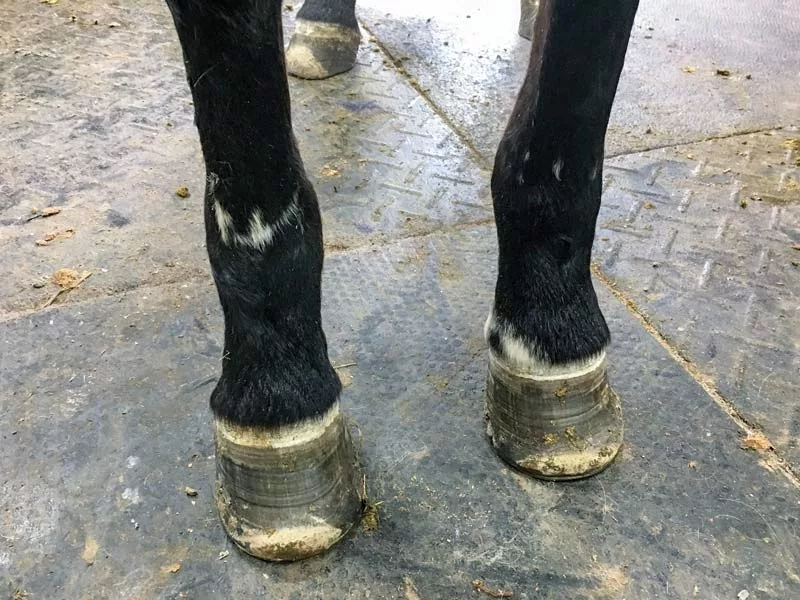American Farriers Journal
American Farriers Journal is the “hands-on” magazine for professional farriers, equine veterinarians and horse care product and service buyers.

Horses presenting high-low syndrome is a common management issue for farriers. And as with other challenges in farriery, there is no one-size-fits-all solution in addressing the problem. Particularly with this syndrome, there are many variants or forms, and the farrier must also factor in many other variables beyond what is presented in the feet to improve the outcome for the horse.
In a roundtable discussion at the 2019 Northeast Association of Equine Practitioners Symposium in Saratoga Springs, N.Y., a group of farriers discussed mismatched feet. By looking at a single case, each shared thoughts on addressing the issue.
Moderating this discussion, Stuart Muir, a farrier at Rood & Riddle Equine Hospital in Lexington, Ky., presented a recent mild case of high-low syndrome. Figures 1a-1g show the case through images and radiographs before he addressed anything with the feet. The horse was a 17-year-old crossbreed without any information on when it was last shod or notes from the previous farrier. No lameness was reported or observed.
In terms of encountering a horse like this for the first time, Wellington, Fla., farrier Curtis Burns advocates a conservative approach.
“With the right front, I will try to clean it up and back it up a bit and see if it can start to develop more heel,” he says. “I would also consider the mechanics. The goal is a good, tidy shoeing and see where we go. I don’t want to be aggressive the first time around…